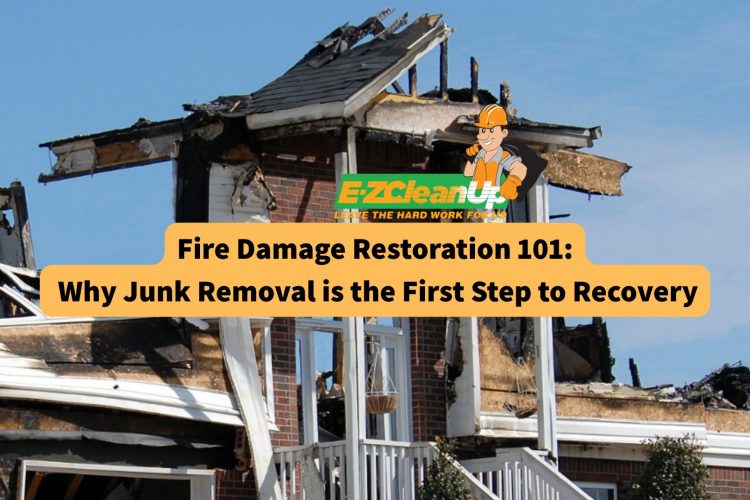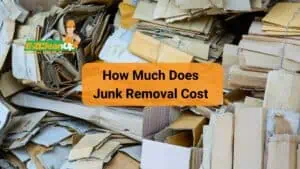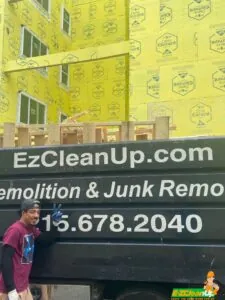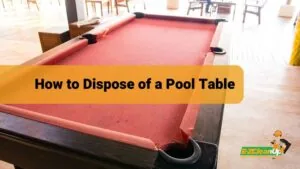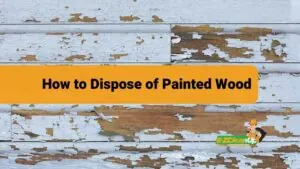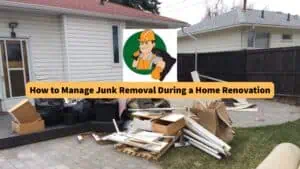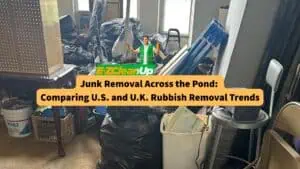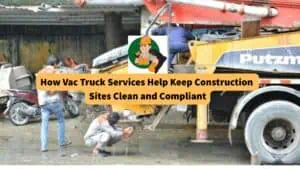After a fire, junk removal is typically the first step towards recovery. Burnt debris, damaged furniture, and hazardous materials must be cleared to make way for repairs. By removing these items, it helps prevent further damage, improves safety, and speeds up the restoration process. Hiring a professional junk removal service also ensures proper disposal and cleanup.
If you want to know more about fire damage restoration and why hiring a junk removal service is the first step to recovery, you can continue reading this guide for more information.
#1 Why Junk Removal Comes First During Fire Damage Cleanup?
Junk removal is the first step in fire damage cleanup because it makes restoration safer and faster. Here’s are the reasons why it’s important:
Keeps the Area Safe
Fires usually leave behind sharp debris, melted plastic, and harmful chemicals. By removing these items, it helps reduce the risk of injury and contamination.
Prevents More Damage
Water from fire fighting can also cause mold build up and weaken structures. Clearing these debris helps stop further issues and allows repairs to start sooner.
Prepares for Restoration
Removing burned items makes the place easier to clean, repair, and rebuild. This step also makes sure that smoke, soot, and odors can be fully treated.
Ensures Proper Disposal
Fire debris may contain hazardous materials that need special handling. Professional junk removal follows disposal rules so the environment and its people stay protected.
Speeds Up Recovery
A clutter-free space allows restoration teams to work faster, which can help property owners to regain control after a fire.
#2 Why Cleaning Burnt Debris After a Fire is Important?
Cleaning up burnt debris after a fire is important for safety, health, and restoration. Here’s why:
1. It Keeps People Safe
Burnt debris may contain harmful chemicals or unstable materials. So, a proper cleanup can help prevent causes of breathing problems, skin irritation, and injuries.
2. Protects the Environment
Fire debris can pollute the air, soil, and water if not removed properly. Safe disposal prevents the occurrence of any contamination just by following the environmental rules.
3. Helps with Repairs
Clearing debris allows experts to assess damage and start rebuilding. It also removes smoke and soot odors that can linger.
4. Prevents Future Problems
Leftover debris can lead to mold from water damage or even create risks in wildfire-prone areas. Therefore, removing it reduces these dangers.
5. Follows Local Rules
Some areas may require inspections before cleanup, and proper disposal can help guarantee compliance to avoid fines.
#3 How Junk Removal Can Help Speed Up the Fire Damage Restoration
Aside from health and safety reasons, junk removal is key to speeding up fire damage restoration–by removing hazards and preparing the space for recovery. Here’s how it helps:
- Makes the Area Safe – Fire-damaged homes often have sharp, unstable, or toxic debris like glass, burnt wood, and plastic. Clearing these items creates a safe workspace for repairs.
- Allows Damage Inspection – Removing debris exposes the structure to help experts check for fire and water damage. This is important for planning repairs and preventing further issues.
- Prevents More Damage – Water from fire fighting can cause mold and decay. Removing wet, damaged materials quickly helps avoid these problems.
- Speeds Up the Cleanup – Professional junk removal teams handle sorting, hauling, and disposal, so the process is faster and allows restoration to begin sooner.
- Handles Waste Properly – Some fire debris contains hazardous materials that need special disposal. Junk removal services make sure they handle the debris safely and follow your local environmental rules.
#4 How to Identify Unsalvageable Items and Dispose Them Safely
After a fire, identifying and safely disposing of damaged items is important for health, safety, and restoration. Here’s how to do it:
How to Identify Unsalvageable Items
Look for Visible Damage
Check for charring, warping, cracks, or structural weakness in furniture, appliances, and glass objects. Items with minor damage may be salvageable.
Check for Smoke Odor
Porous items like clothes, carpets, and cushions that hold strong smoke smells are often too damaged to restore.
Test Electronics
Try turning on electronics safely. Soot and smoke can damage internal parts, which makes them unsafe to use.
Watch for Health Risks
Discard food, medicine, pet food, and cosmetics exposed to smoke, heat, or chemicals.
Get Expert Help
If unsure, ask a professional to help you check for any hidden damage.
Common Unsalvageable Items
- Burnt or Charred Items – Clothes, furniture, and bedding exposed to flames.
- Food and Pet Food – Any food touched by heat, smoke, or water.
- Medications and Cosmetics – Can be altered by heat or chemicals.
- Electronics – Soot and moisture damage can make them unsafe.
How to Dispose of Fire-Damaged Items
- Follow Local Rules – Some materials–like asbestos or lead–need special disposal services.
- Sort Debris – Separate concrete, metal, ash, and contaminated materials for proper disposal.
- Hire Professionals – Fire restoration companies can handle hazardous waste safely.
- Stay Safe – Avoid touching toxic ash or debris. You can also wear protective gear if you are handling items yourself.
#5 The Role of Professionals for Your Junk Removal and Fire Damage Restoration
Hiring professional junk removal and fire damage restoration services helps speed up recovery after a fire. Here’s how they help:
How Junk Removal Professionals Help
1. Ensure Safety
Trained experts handle sharp debris, toxic materials, and unstable structures, which makes every cleanup safer.
2. Dispose of Waste Properly
Fire debris may contain hazardous materials like melted plastic and chemicals, and professionals always follow disposal rules to protect the environment.
3. Speed Up Cleanup
Junk removal teams work fast, which can help delays and reduce further risks like mold growth.
How Fire Damage Restoration Experts Help
1. Assess the Damage
Experts check fire, smoke, and water damage to create a recovery plan.
2. Deep Cleaning
They use advanced methods to remove smoke odors and sanitize the area.
3. Repair Structures
Teams fix damaged walls, floors, and ceilings to restore the property.
4. Protect Health
Professionals remove soot and prevent harmful particles from spreading through air systems.
Why Hiring Professionals Matters
- Safer Cleanup – Experts use protective gear and tools to handle hazardous waste.
- Faster Recovery – Quick junk removal and restoration minimize delays.
- Complete Restoration – A coordinated approach can help guarantee a smooth, stress-free process.
#6 FAQs
What types of debris need special disposal after a fire?
Materials like asbestos, melted plastic, chemicals, and lead-based paint require special handling.
What should I do if my home smells like smoke after a fire?
Deep cleaning, air purifiers, and professional odor removal treatments can help eliminate lingering smoke smells.
Do I need a permit for fire debris disposal?
Some areas may require permits for hazardous waste disposal. Professional services can handle this.
#7 The Bottom Line – Recovering from Fire Damage: Why Junk Removal and Professional Restoration Matter
Recovering from a fire starts with clearing out damaged items and debris. Junk removal is the first step because it makes the area safe, prevents further damage, and prepares the space for repairs.
Hiring professionals for cleanup and restoration also speeds up the process, reduces risks, and ensures proper disposal of hazardous materials. Experts also handle issues like smoke odors and structural repairs, to help property owners restore their homes or businesses faster.
Using the right help, the recovery becomes safer, smoother, and less stressful.

